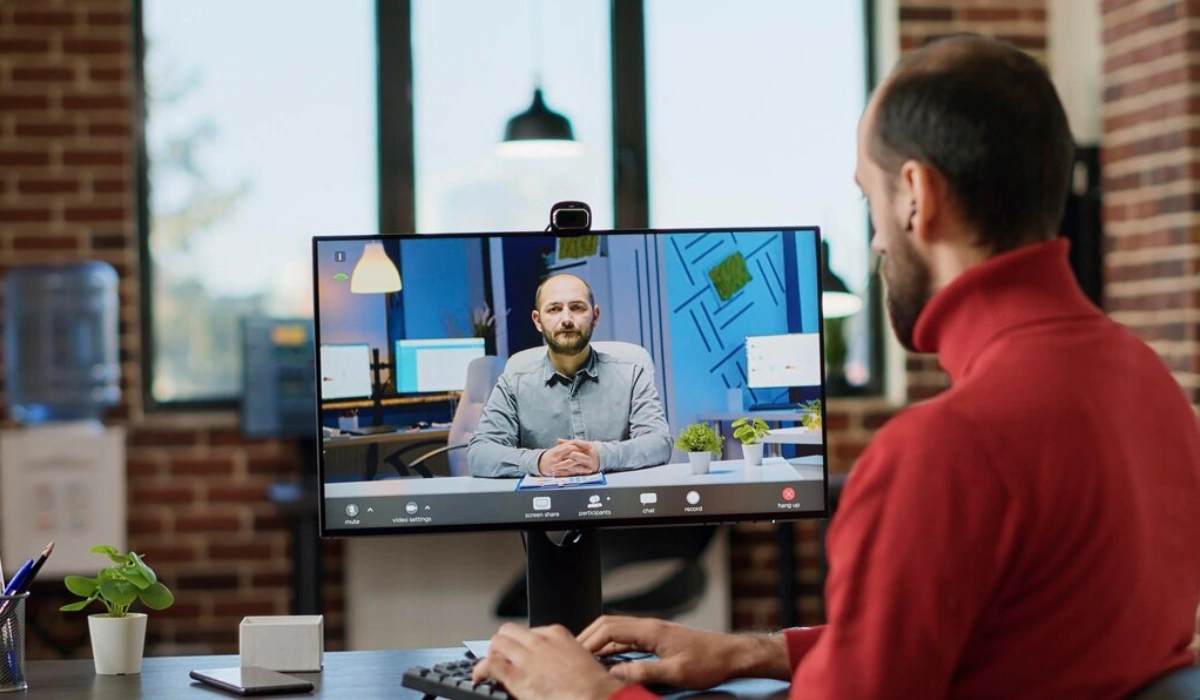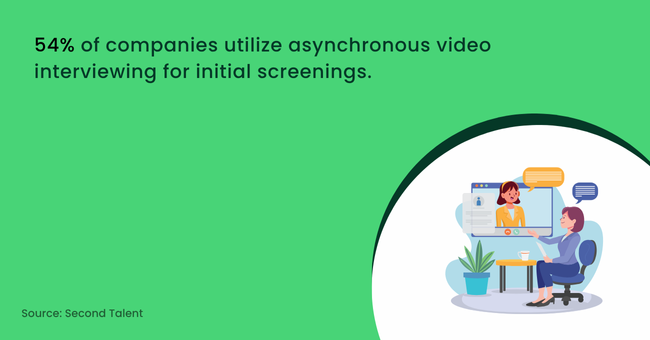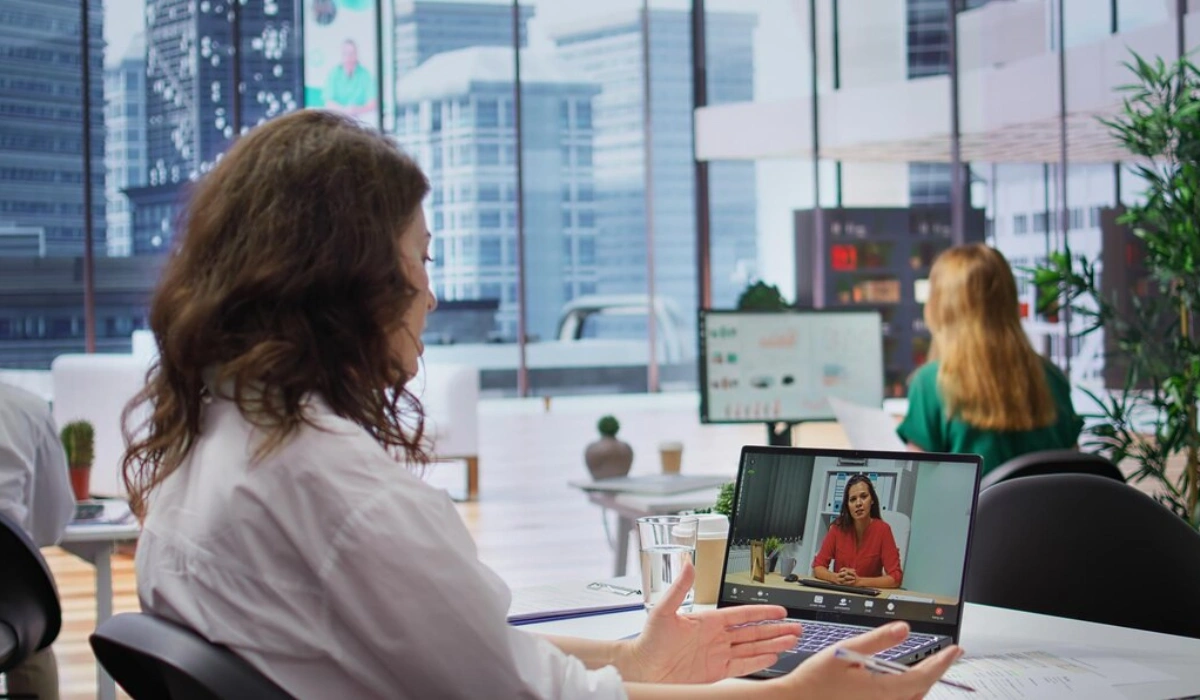
What is a One Way Video Interview? Guide for Recruiters
Oct 07, 2025 |
TL;DR
- What it is: A one-way video interview (or asynchronous video interview) allows candidates to record answers to pre-set questions at their convenience. Recruiters review responses later.
- Key benefits: Saves time, reduces scheduling conflicts, improves fairness, and offers a better candidate experience.
- Best practices: Keep questions clear and concise, use structured scoring, provide instructions, and monitor metrics like completion rates and time-to-hire.
- Integration: Works best during pre-screening or shortlisting; integrates with ATS and other candidate screening tools for a smooth workflow.
- Impact: Research shows that 54% of companies now use asynchronous video interviews for initial screenings, highlighting how organisations rely on this method to save time, maintain consistency, and assess candidates more effectively.
- Recommendation: Platforms like ScreeningHive provide user-friendly video interview software for structured, efficient, and fair hiring.
Recruiters today face a mountain of challenges: hundreds of applications to go through, remote hiring becoming the norm, and pressure to fill roles quickly without affecting the candidate experience. Traditional hiring methods can feel slow and difficult, making it hard to find the right talent on time.
This is where the one-way video interview comes in. Also called an asynchronous video interview, it lets candidates record their answers to pre-set questions whenever it suits them. Recruiters can then review these answers at their own pace. No more scheduling conflicts, no more rushed evaluations, just a consistent and fair way to see who truly fits the role.
This guide will walk you through everything you need to know about one-way video interviews, how they work, best practices for implementation, and ways to smoothly integrate them into your hiring process. By the end, you'll see how this approach can save time, improve fairness, and make hiring a simpler experience for everyone involved.
What Is a One Way Video Interview?
A one-way video interview is an asynchronous interview format where candidates respond to pre-determined questions without the recruiter being present in real-time. Unlike live or two-way video interviews, which require both parties to be available simultaneously, one-way interviews allow candidates to complete the process on their own schedule.
Key Differences Between One-Way and Live Interviews
- Scheduling: One-way interviews remove the need to coordinate schedules, whereas live interviews require real-time availability.
- Consistency: All candidates answer the same questions in the same format, ensuring fair assessment.
- Flexibility: Candidates can record responses at any time, making it accessible for those balancing work, studies, or personal commitments.
Benefits for Recruiters and Candidates
For Recruiters:
- Saves time by reviewing multiple candidates asynchronously.
- Reduces administrative workload and repetitive interviews.
- Standardises evaluation criteria for fairness.
For Candidates:
- Offers flexibility to choose the best time to record responses.
- Reduces interview-related stress by allowing practice and preparation.
- Provides a professional yet comfortable platform to showcase skills.
One-way video interviews are becoming a standard part of modern recruitment. According to Second Talent, 54% of companies now use asynchronous video interviews for initial screenings, highlighting how organisations are increasingly relying on this method to save time, improve fairness, and evaluate candidates efficiently.

Why Recruiters Are Adopting One Way Video Interviews
Modern recruitment demands efficiency, fairness, and consistency. Here’s why more organisations are embracing one way video interviews:
- Time Efficiency: Screening candidates through phone calls or live video interviews can be complicated and time-consuming. With one-way interviews, recruiters can review multiple applications quickly, freeing up time for higher-value activities such as engaging with top talent or planning recruitment strategies.
- Consistency: Structured, predefined questions ensure every candidate undergoes the same evaluation, eliminating inconsistencies that may arise during live interviews. This leads to more reliable hiring decisions and better comparability of candidates.
- Flexibility: One-way interviews provide candidates with the convenience of completing the interview at their preferred time and location. This flexibility can lead to higher participation rates, particularly for candidates who are employed or located in different time zones.
- Reduction in Bias: By relying on objective, structured questions and standardised evaluation criteria, one-way interviews help minimise unconscious bias. Recruiters can focus on skills, competencies, and responses rather than subjective factors like appearance or first impressions.
- Improved Candidate Experience: Offering an interview format that is convenient and stress-free demonstrates respect for the candidate’s time. Candidates are more likely to have a positive impression of the organisation, improving employer branding and the likelihood of acceptance if offered a role.
How One Way Video Interviews Work?
One way video interviews, or pre-recorded video interviews, allow candidates to respond to pre-set questions asynchronously, giving recruiters flexibility and consistency in evaluation.
For Recruiters
1. Create job-specific questions tailored to the role, using behavioural, situational, or technical prompts.
2. Set time limits and instructions to guide candidates and ensure fairness.
3. Send invitations via email or ATS, often with automated reminders.
4. Review recorded responses at a convenient time, pausing or sharing with the hiring team.
5. Shortlist candidates using structured scoring to ensure objective evaluation.
For Candidates
1. Receive clear instructions and access the platform.
2. Review practice questions or trial recordings to familiarise themselves.
3. Record answers at a convenient time, ensuring thoughtful responses.
4. Submit interviews securely for recruiter review.
5. Receive updates on next steps, enhancing transparency and experience.
This streamlined process saves time, improves fairness, and allows recruiters to evaluate candidates efficiently while offering flexibility and convenience for applicants.
Top Features to Look for in a One Way Video Interview Tool
Selecting the right one-way video interview software is crucial for maximising efficiency and ensuring a smooth candidate experience. Here are features to prioritise:
- Customisable question templates: Tailor questions for different roles and levels.
- Ability to add text or video questions: Encourage comprehensive responses and evaluate communication skills effectively.
- Scoring and evaluation systems: Objectively compare candidates based on predefined criteria.
- Integration with ATS: Streamline workflow and maintain records within your recruitment platform.
- Candidate-friendly interface: Ensure ease of use to avoid technical difficulties and improve completion rates.
- Security and compliance features: Protect candidate data and ensure adherence to data protection regulations.
Best Practices for Implementing One Way Video Interviews
Effectively implementing one way video interviews ensures a fair, efficient, and professional recruitment experience.
1. Design Clear and Concise Questions
Focus on role-relevant skills and competencies. Use scenario-based or behavioural questions to get meaningful insights, e.g.,“Describe a challenging project you managed and how you ensured its success.”
2. Keep Interviews Short and Focused
Limit interviews to 15-30 minutes with 6-8 questions to maintain candidate engagement and encourage concise, high-quality responses.
3. Provide Detailed Instructions
Give candidates clear guidance on timing, technical setup, and recording environment. Practice questions or trial runs can help reduce anxiety and technical issues.
4. Ensure Fairness and Accessibility
Accommodate candidates with disabilities, avoid ambiguous questions, and provide equal access to instructions and support.
5. Review Responses Objectively
Use structured evaluation criteria and scoring rubrics to reduce bias. Encourage multiple reviewers for collaborative and consistent assessment.
6. Communicate Promptly
Confirm receipt, provide updates on next steps, and offer feedback when possible to enhance the candidate experience and strengthen your employer brand.
7. Continuously Optimise
Monitor metrics such as completion rates, time-to-hire, and feedback from candidates and hiring teams. Use insights to refine questions, instructions, and workflow.
Seamlessly Integrating One Way Video Interviews into Your Hiring Workflow
Implementing a one way video interview effectively requires thoughtful integration into your recruitment process. When positioned correctly, it enhances efficiency, improves candidate experience, and provides actionable insights.
1. Identify the Right Stage
One-way interviews for recruiters can be used at multiple stages:
- Pre-screening: Quickly assess basic qualifications and role-specific skills.
- Shortlisting: Gain deeper insights into communication, problem-solving, and cultural fit.
- Final assessment: Supplement live interviews for consistent evaluation across candidates.
2. Align with ATS and Teams
Integration with your Applicant Tracking System (ATS) streamlines invitations, reminders, and record-keeping. Collaboration between HR, recruiters, and hiring managers ensures smooth review, scoring, and feedback.
3. Maintain Consistency and Fairness
Standardised question templates and clear evaluation criteria ensure objective assessment across roles and departments. This reduces bias and supports fair hiring practices.
4. Combine with Other Screening Tools
Use one-way interviews alongside resumes, skills tests, or personality assessments to get a complete view of candidates’ abilities.
5. Monitor and Optimise
Track metrics like completion rates, time-to-hire, and candidate quality. Regular feedback allows continuous refinement of the process, ensuring efficiency and effectiveness.
How to Measure the Impact of One Way Video Interviews?
Tracking key metrics helps evaluate the effectiveness of candidate screening tools and online interview platforms:
- Candidate completion rates: Measure engagement and identify potential process friction points.
- Time saved: Compare traditional methods to asynchronous interviews to quantify efficiency gains.
- Quality of shortlisted candidates: Track hires and performance post-onboarding to assess predictive value.
- Feedback from candidates and hiring teams: Gather insights to improve the interview process and technology adoption.
By monitoring these metrics, organisations can make informed decisions about investment in pre-recorded video interviews and continuously optimise recruitment strategies.
Conclusion
The one way video interview is transforming recruitment by offering efficiency, flexibility, and fairness. By adopting best practices, leveraging video interview software, and integrating the process into workflows, organisations can streamline hiring, reduce bias, and enhance the candidate experience.
For recruiters looking for a robust solution, platforms like ScreeningHive provide an intuitive video interview platform that simplifies candidate screening, allows structured asynchronous video interviews, and helps hiring teams make faster, data-driven decisions.
Frequently Asked Questions (FAQs)
1. What is a one way video interview?
A one way video interview, or asynchronous video interview, lets candidates record answers to pre-set questions at their convenience. Recruiters review these recordings later for faster, more flexible screening.
2. How is a one-way interview different from a live interview?
Live interviews happen in real time. One-way interviews are pre-recorded, removing scheduling issues and ensuring a consistent, unbiased evaluation for every candidate.
3. Can it integrate with an ATS?
Yes, many video interview software solutions, like ScreeningHive, integrate directly with Applicant Tracking Systems for a seamless workflow.
4. How long does a one way video interview take?
Typically 15-30 minutes, with each question allowing 1-3 minutes for a response. It's designed to be efficient while giving candidates enough time to express themselves.
5. Can candidates re-record their answers?
Some platforms limit candidates to a single attempt, but ScreeningHive allows re-recording within the set time, giving candidates a chance to provide their best responses.







